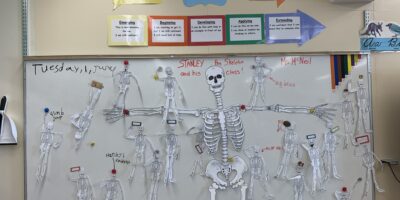Digital citizenship can be described as “the continuously developing norms of appropriate, responsible, and empowered technology use” (Lauricella, Herdzina & Robb, 2020, 2). This implies that to have digital citizenship, one should have awareness of what they are observing, as well as producing and it should follow certain guideline to be deemed acceptable to the viewers. This then allows for teachers and parents to shows students appropriate websites and content, as well as teaching them the rules of being online and how they should conduct their behaviour.
Digital citizenship is important because it addresses the subjects of but not limited to privacy and security, cyber bullying, hate speech, relationships, influences etc. (Canada, 2017). Knowing how these subjects are shown on the internet is important for students because as our world develops, digital means will become more prevalent, not only in students’ lives but in our education system. Digital citizenship is then connected to education due to the information that can be shared through different platforms and how teachers can then share the appropriate and responsible means to acting while have access to this technology. “Education need to be reconfigured to fit our changed context” (Pedersen, Norgard & Koope, 2018) so that as this all access pass to anything and everything in the digital world grows, students know how to responsibly use these resources to their advantage, not only for learning but for personal use as well.
Digital citizenship can be taught in classrooms from Kindergarten all the way to grade 12, advancing as students mature and gain more access to the digital resources. Nowadays students have the means of going on the internet and accessing anything from a very young age as tablets and phones are geared towards the younger generations in order to keep everyone connected to the newest things. Starting in younger grades, teaching that going on the internet should be supervised, and that not everything that they have access to will be honest and truthful even if they themselves are. As students mature, showing them how to identify safe websites, as well as teaching them the etiquette of being online. Have access to digital means is a privilege, and if students do not know how to appropriately use it then they should not have access to it, nor are they getting the full benefits of this technology.
It is also important to teach students at a young age that anything they themselves put out there, is in the digital world forever and even if they think it is removed, it may not be completely and there can be future consequences for something that has been posted in the past. That implies to cyberbullying, which all students should be taught to be aware of and how to report it to the appropriate adult or supervisor.
Digital citizenship is a set of standards that everyone online should be following. This means that it should be followed at school and at home. It is important to remember that having access to these resources is a privilege that can be taken aware when not used responsibly and by teaching it from a young age it will set students up for success in the future to use digital resources to their full advantage.
References
Canada. Public Safety Canada. (2017). Digital Citizenship Guide for Parents. Ottowa: Public Safety Canada.
Lauricella, A.R., Herdzina, J., & Robbe, M. (2020). Early childhood educators’ teaching of digital citizenship competencies. Computers and Education, 158, pp. 1-9. DOI: 10.1016/j.compedu.2020.103989.
Pedersen, A.M., Norgoard, R.T., & Koope, C. (2018). Patterns of inclusion: Fostering digital citizenship through hybrid education. Educational Technology, 21(1), pp. 225-236.



Leave a Reply